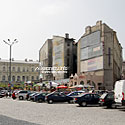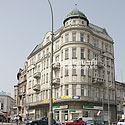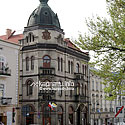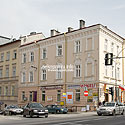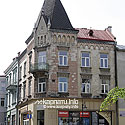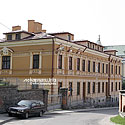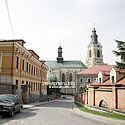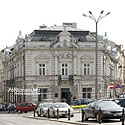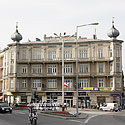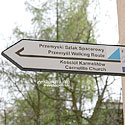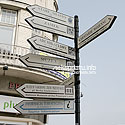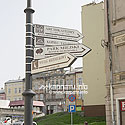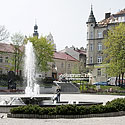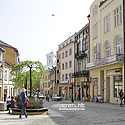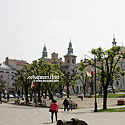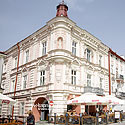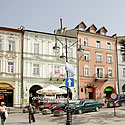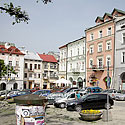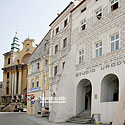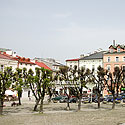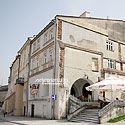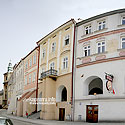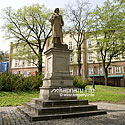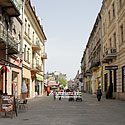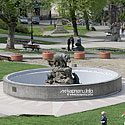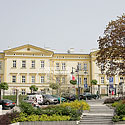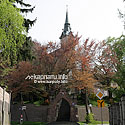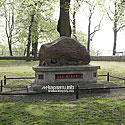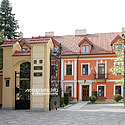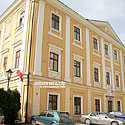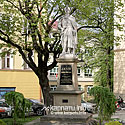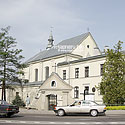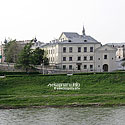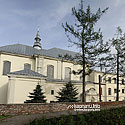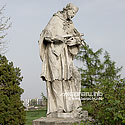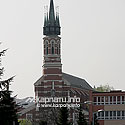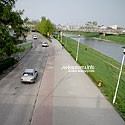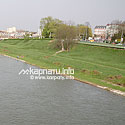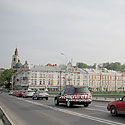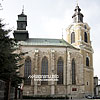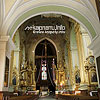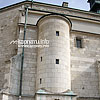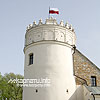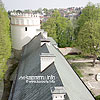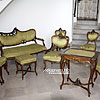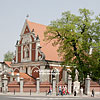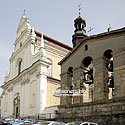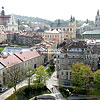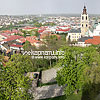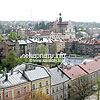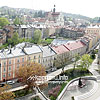Przemyśl
Przemyśl is one of the oldest cities in Poland. Since Polish princely (late IXth century — 1025) and royal (1025–1079, 1295–1370) Piast dynasties the relics of the rotunda and palatium have been preserved till these days on the Castle Hill. In the XVIth century Casimir the Great built a Gothic castle on this site, which has been towering above the city and the valley of San river, though it has experienced several reconstructions throghout its existence. At the foot of the Castle Hill, King Wladyslaw Jagiello founded a Catholic cathedral, which after the reconstruction in the XVIIIth century combined the elements of Gothic and Baroque architecture.
Below Catholic cathedral there is a unique sloping market, with three sides of the building preserved till today. Stone houses of the XVIth century were "witnesses" of the Przemyśl golden age, that at the turn of the XVIth — early XVIIth centuries was in the list of the largest and richest cities of Poland. Today this fact is affirmed by richly decorated churches: Franciscan, Jesuit, Carmelites.
There are over 100 historic sights in the city. Panorama of the old central part of Przemyśl, Zniesienia and Winna Góra may be viewed from the high Clock Tower, inside which a unique Museum of Bells and Pipes functions.
In the second part of the XIXth century one of the largest fortresses in the old continent was built by Austrians, on the slopes around Przemyśl. Several hundred of houses were built in the city, including Secession stone houses, which at that time were typical for such big cities as Vienna, Krakow or Lviv. Przemyśl became famous throughout Europe during World War I, when Przemyśl fortress which at that time was called a "Gate of Hungary", was besieged by Russian troops for months. Ruins of the powerful forts, which endured three sieges in different conditions, nowadays attract tourists to Przemyśl.
Przemyśl is also a great base for sightseeing tours to Przemyśl and Dynów lowlands, Bieszczady, Lviv and Kresy (former Polish eastern border). The tourist and walking trails to Sanok and Dynów begin in the city. Not far from the city there is a tourist trail to Ustrzyki Dolne and fortress excursion trail. Przemyśl is famous for the richness of its landscape and historical monuments. Nearby an old town of Krasiczyn is located, with a spectacular castle, which without a doubt deserves a title of a pearl of the Polish Renaissance. On the picturesque slopes over Wiar river (this river also runs through Ukraine, but it's called Vihor here) there are 42 Kalwaria chapels, near the famous monastery complex of the Shrine of the Suffering of Jesus and Our Lady.
Another observation deck of Przemyśl, that is popular among tourists, is Tatar's Barrow in Zniesienie. Nearby there are remains of the fort #16 which belongs to the ring-shaped defensive Przemyśl fortress. In the north-western slope of Zniesienia a modern "Przemyśl" ski lift was constructed, being very popular both among the residents of the Subcarpathian Voivodeship and tourists from abroad and other regions of Poland.
Sacred architecture
- Basilica of the Ascension of the Virgin Mary and St. John the Baptist (1571)
- Greek Catholic theological seminary (1912)
- Greek Catholic church of St. John the Baptist (1626-1632)
- Our Lady of Sorrows Greek Catholic church (1933-1935)
- St. Antoni Padewski church and the Franciscan monastery (XIIth century)
- Carmelite church of St. Theresa (1620-1630)
- Franciscan church (XVIIIth century)
- New synagogue (1910-1918)
- Orthodox church of the Nativity of the Blessed Virgin Mary (1880)
- Cathedral basilica of the Assumption of the Blessed Virgin Mary (1887)
- Ruins of Zasanie Synagogue (1890-1892)
Cemeteries
- Gate of the Jewish cemetery (XVIth century)
- New Jewish cemetery (1822)
Fortifications
- Remains of the city walls (XVIth-XVIIth centuries)
- Castle Kazimierz (1939-1941)
- Castle Kazimierz (XIth century, 1340)
- Fortress Przemyśl (XIXth-XXth century)
Palaces
- Greek Catholic Bishop palace (1898-1900)
- Lubomirski palace (1885-1887)
Other sights of architecture and history
- Building of the city government (XVIth century)
- Clock Tower (1775-1777)
- Railway station (1860)
- Tatar's Barrow
- Ukrainian National House (1901-1904)

 Ukraine
Ukraine Poland
Poland Slovakia
Slovakia
 Українською
Українською